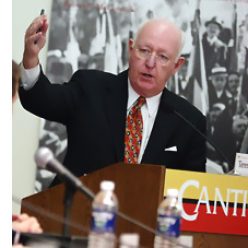Not long ago, The New York Times’ Maggie Haberman, the Trump Whisperer, posted an innocuous tweet about squabbling within the Trump Circle. It produced a furious response on Twitter from people sick of hearing about Donald Trump, challenging Maggie to give it up, stop reporting on Trump; he’s finished, so are you, etc. One reader threatened to drop Maggie’s account if she continued.
Big mistake, in my view. I think it is vitally important to learn the full story of what happened during the chaotic days of the Trump Administration.
Maggie has contracted to produce a book on Trump, due out in 2022, so yes, she has a reason to keep reporting on Trump and his circle and all the wacky things that went on before, during and after his presidency. But it is also her job. The Times has smartly assigned her to the politics desk to track the Trump post-presidency and its impact on the runup to the 2022 elections. As her 1.7 million Twitter followers and Times readers know, Maggie has been covering Trump for years, has sources inside the Trump World that other reporters can only dream of and is a fine writer. (She is also a second-generation Timesian, the daughter of the estimable columnist, Clyde Haberman.)
But the issue here is not Maggie Haberman or even her cranky Twitter followers. It is about the public’s need to fully understand just what happened during the Trump years: the chaos, the confusion, the gross mismanagement, the corruption and the cynical, self-centered politics of the 45th president and the Republican members of Congress that enabled him for what they believed was their own political benefit. It is an extraordinary story and at this point, we don’t know the half of it.
Reporting and reconstructing that history is a huge, costly and complicated job, but one that media organizations must tackle. There are 74 million Americans out there who need to know precisely who and what they voted for in November. And there are scores of former officials and insiders in Trump world who will be willing to talk now that they are out of office.
Media: get to it.
